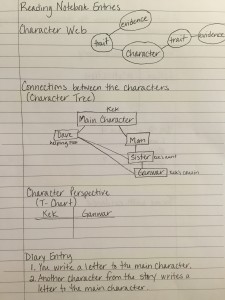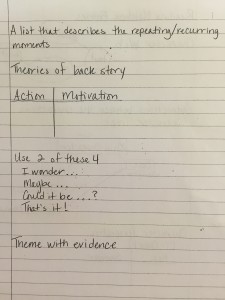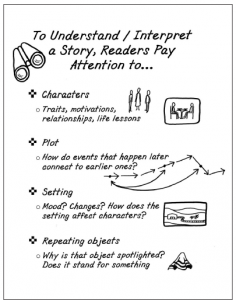Carter’s Holler
NEWSPAPER BOOK REPORT
The Book Club groups will be creating the front page of a newspaper that “reports” about their book. Each book club member is responsible for one article. The articles should tell about an important even in the story, and then explain why it’s important (connect to theme). See below for an example of an article written for the book Inside Out and Back Again.
List of Newspaper Names
A DRIED PAPAYA TREE
BY CRAIG WILSIE
Packages of dried papaya were found in the kitchen trash the evening of Dec. 20th. The packages were discovered by mother who knew exactly how they had gotten there. They had been a Christmas gift to Ha from Mrs. Washington. This discarded gift was actually a very thoughtful gift, for Mrs. Washington had learned that Ha loved papaya while they were looking at photographs at her home. Unfortunately, these were not the papayas that Ha longed for. These were chewy, sugary, waxy, and sticky. Not at all the same, so she threw them away.
But it wasn’t just that she didn’t like the way they tasted. Papaya was much more meaningful to her than that. She had her own papaya tree back home. To Ha, papaya and this tree represented her life back in Vietnam. Her normal life – the life she wanted. Similarly to the dried papaya, when she moved to this “dried” version of life in America, she didn’t like it at all.
Luckily, Ha’s mother knew what to do. She washed the sugar off the dried papaya and then soaked it in water. This made it more like real papaya. So when Ha tried it a second time, she thought, “Not the same, but not bad.” That’s what life in America will be like for Ha, not the same as Vietnam, but not bad. Hopefully mother will continue to be able to bridge the gap between her old Vietnam life and her new American one.
Nonfiction Reading:
Our new reading unit is a nonfiction unit. We are excited to begin th99DK6Cis unit that will foster our students interest in the world around them – from current events, to history, to technology. We will begin the unit by using short articles to work on skills that will help students effectively summarize a text. As we move forward, students will use the skills they have developed to study a research topic of their choice and produce a “google slides” presentation to share with their classmates. Students will choose their research topic from the following categories: Historical Events, Scientific or Technological Discoveries or Advancements, Human Impact on the Natural World, or Natural Phenomenon.
During this unit there will be some shifts in home reading expectations.
What has not changed?
- Students are still expected to read for a minimum of 30 minutes every day
- Students will record their reading homework in their reading journals
What is different?
- Students do not need to continue writing four entries a week based on their independent reading book.
- Students are expected to responded to three assigned articles each week in their reading journals.
- Students will be given specific directions regarding what to include in their journal entries.
How to start a summary:
Below are some summary starters that students can use that both acknowledge the work of the author and clearly make use of the structure of the text.
Order/Sequence: The author gives (shows/tells…) the steps (events, procedures..) about/for…
Cause and Effect: The author shows (explains/tells) why _______causes_____. OR The author shows (reveals/explains) the connection between…
Problem and Solution: The author tells (explains/shows) how (problem is being solved) OR The author explains (tells/shows) how (person, group, or animal) solved (figured out, learned to, helped…) (the problem)
Compare and Contrast: The author compares __ and _______ OR The author reveals the similarities and differences between _________ and ________.
Some possible questions to pursue in your reading journals:
*How does a particular character feel . . .
-At the beginning, middle, or end of the book (was there a change?) Why? What evidence supports this?
-About another character? Why? What evidence supports this?
-About an event? Why? What evidence supports this?
*How would the story be different if . . . (choose an important event, how a character chooses to respond, etc.)? What does this say about why the author chose to write it the way he/she did?
* What is the conflict and resolution in the story?
*What is the theme or lesson? Use the story to support your answer.
Reading Notebook Entry Examples
What they should be focusing on in their books.
Questions to Ask Your Child About Their Reading





